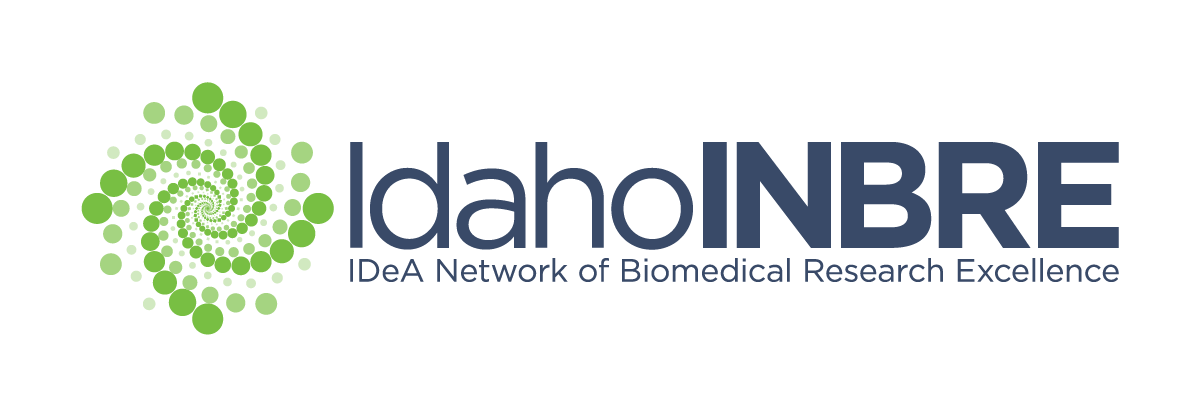 In November 2001, the University of Idaho (UI) received a three-year $6 million award from the National Institutes of Health (NIH) to create a statewide biomedical research network between the UI, Idaho State University (ISU) and Boise State University (BSU). This program was called BRIN for Biomedical Research Infrastructure Network. BRIN funds were used to enhance research facilities at the three universities, provide seed money for new research projects, graduate and undergraduate student support, faculty release time from teaching and supplement to research start-up costs. Our initial success was rewarded by two supplements totaling $2.3 million to continue these projects plus expanding the network to other colleges and universities throughout the state.
In November 2001, the University of Idaho (UI) received a three-year $6 million award from the National Institutes of Health (NIH) to create a statewide biomedical research network between the UI, Idaho State University (ISU) and Boise State University (BSU). This program was called BRIN for Biomedical Research Infrastructure Network. BRIN funds were used to enhance research facilities at the three universities, provide seed money for new research projects, graduate and undergraduate student support, faculty release time from teaching and supplement to research start-up costs. Our initial success was rewarded by two supplements totaling $2.3 million to continue these projects plus expanding the network to other colleges and universities throughout the state.
 In July 2004, through a competitive review process, the UI received a five-year award of $16.1 million to expand the network and enhance opportunities for faculty and students at the other colleges and universities throughout Idaho. At that time, it was the largest award for biomedical research in the state’s history. The scope of the project and the title changed to the IDeA Network of Biomedical Research Excellence (INBRE). While BRIN focused on enhancing infrastructure at the three largest universities in Idaho, the INBRE Program was designed to provide greater research opportunities for faculty and students at every college and university in the state. Thus, the complexity of the program, as well as the goals, expanded. The mission of INBRE was to increase the amount of NIH-funded biomedical research in Idaho. The vision of INBRE was to provide all faculty and students in Idaho who have an interest in biomedical research the opportunity to pursue that goal in the state. Several overlaying projects and networks throughout the state were established.
In July 2004, through a competitive review process, the UI received a five-year award of $16.1 million to expand the network and enhance opportunities for faculty and students at the other colleges and universities throughout Idaho. At that time, it was the largest award for biomedical research in the state’s history. The scope of the project and the title changed to the IDeA Network of Biomedical Research Excellence (INBRE). While BRIN focused on enhancing infrastructure at the three largest universities in Idaho, the INBRE Program was designed to provide greater research opportunities for faculty and students at every college and university in the state. Thus, the complexity of the program, as well as the goals, expanded. The mission of INBRE was to increase the amount of NIH-funded biomedical research in Idaho. The vision of INBRE was to provide all faculty and students in Idaho who have an interest in biomedical research the opportunity to pursue that goal in the state. Several overlaying projects and networks throughout the state were established.
In July 2008, a five-hundred-page proposal (pictured left) was submitted to NIH for competitive review. In April 2009, UI received an additional five-year award of $16.5 million. The INBRE Program again holds the designation of being the largest grant for biomedical research in the state’s history. Five specific aims were developed to enhance the established Idaho Network by strengthening the programs that have been especially productive in research, bioinformatics, capacity building, and science education.
In 2013, the third INBRE proposal was submitted to NIH and in 2014, Idaho INBRE was awarded $16.1 million to continue and build upon the activities of the network. ‘INBRE-3’, in addition to the ongoing efforts to support biomedical research and education for students and faculty across the state, emphasis included the development of Industry Internships for students.
In 2018, a fourth competitive renewal was submitted to NIH, and Idaho INBRE was awarded $17.7 million to continue to build on previous network activities and on furthering connections between the Western IDeA states. The interstate collaborations were formalized in RAIN. INBRE-4 supplement awards added $3.1 million to the program.
In 2023, a fifth competitive renewal application was submitted to the NIH for $19.6 million to continue to build biomedical research capacity and improve STEM education for all Idahoans. When awarded, INBRE-5 will be ongoing through April of 2029.

